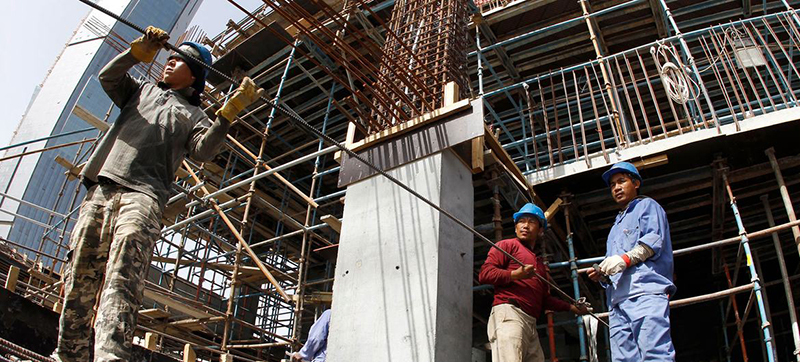 Paris
Paris Building Paris every week: Urgent need to cut emissions in construction sector
The building sector, responsible for an astonishing 37 per cent of global greenhouse gas emissions, has been lacking climate-focused development funding, according to a report published by the UN’s environment agency on Tuesday.
With a new area the size of Paris under development around the globe every week, the construction industry contributes heavily to climate change.
However, the sector has received only a fraction of environmentalists’ attention and of the funds allocated to combat emissions compared with other industries.
Until now, most of the focus has been made on reducing the “operational carbon” of buildings – the emissions created from heating, cooling and lighting, which are projected to decrease from 75 per cent to 50 per cent over the next few decades.
However, the authors of Building Materials and the Climate: Constructing a New Future, argue that the bulk of potential emissions cuts lie in how buildings are constructed, and to what end.
And now the team of experts are calling for the creation of a ‘circular material economy’ to facilitate the achievement of the goals set out in the Paris Agreement on climate.
Three pathways
They outline three immediate pathways for decarbonization that require active support from all participants of the construction sector's lifecycle – from materials producers, architects and designers to builders and property operators:
1. Recycle
In fact, the experts suggest that before building anything new, materials that exist already should take priority through reconstruction, refurbishment or repurposing.
UNEP advocates for the adoption of a circular economy approach to reduce the extraction and production of raw materials.
This strategy calls for data-driven design processes aimed at using fewer materials and encourages the reuse of buildings and recycled materials whenever feasible.
2. Regenerate
Until the middle of the previous century cities were erected using mostly renewable materials, with old structures reused in new projects.
The second pathway outlined in the report involves a shift toward regenerative material use.
This approach emphasizes the use of ethically produced, low-carbon earth and bio-based building materials, such as sustainably sourced bricks, timber, bamboo, as well as ‘agricultural and forest detritus’.
3. Decarbonize
The third pathway focuses on improving methods to radically decarbonize conventional materials like concrete, steel, and aluminium.
For example, production of steel, the backbone of modern architecture, could be transformed to use only renewable energy, the experts propose.
They also insist that non-renewable, carbon-intensive materials should only be used when absolutely necessary, minimizing their environmental impact.
Besides that, UNEP-led specialists believe, when designing new buildings architects should keep in mind the ways to disassemble the structures and to reuse materials reducing thus the landfill burden.
Web of factors
Addressing the industry’s carbon emissions is a complex web of different factors, involving numerous stakeholders, thus the report underscores the critical importance of developing new models for cooperation to drive the much-needed transformation in the sector.
It is also clear that without significant funding and cooperation, the ambitious goal of achieving net zero emissions from construction by mid-century may remain elusive, with potentially devastating consequences for global warming.
Support Our Journalism
We cannot do without you.. your contribution supports unbiased journalism
IBNS is not driven by any ism- not wokeism, not racism, not skewed secularism, not hyper right-wing or left liberal ideals, nor by any hardline religious beliefs or hyper nationalism. We want to serve you good old objective news, as they are. We do not judge or preach. We let people decide for themselves. We only try to present factual and well-sourced news.







